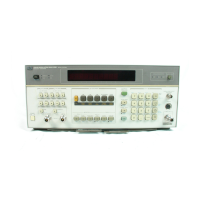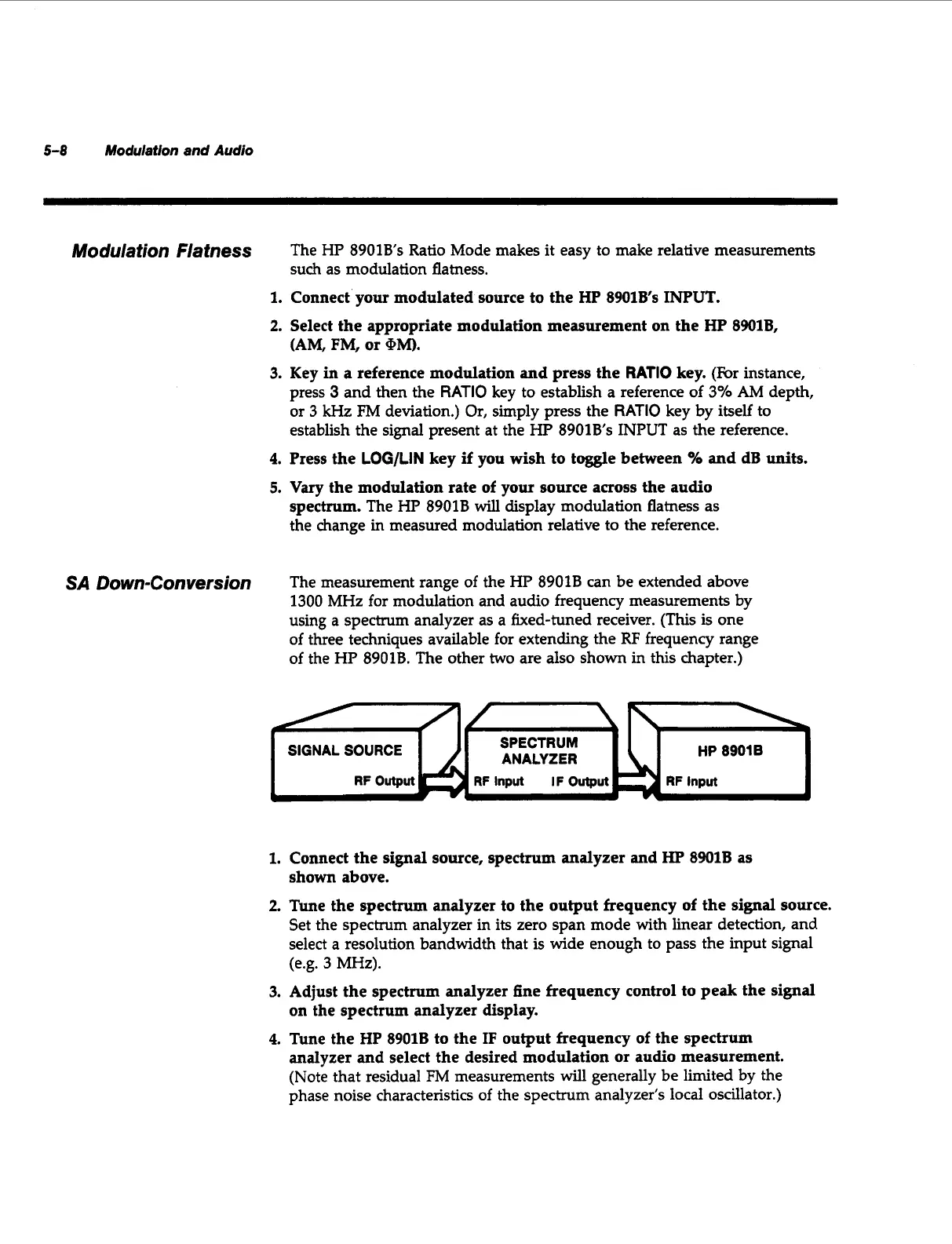5-8
Modulation
and Audio
Modulation flatness
The HP 8901Bs Ratio Mode makes it easy to make relative measurements
such
as modulation flatness.
1.
Connect your modulated source to the HP 89018’s
INPUT.
2.
Select the appropriate modulation measurement on the HP 8901B,
3.
Key
in
a reference modulation and press the
RATIO
key. (For instance,
(AM,
FM,
or
@W.
press
3
and then the
RATIO
key to establish a reference of
3%
AM
depth,
or 3
kHz
FM
deviation.) Or, simply press the
RATIO
key by itself to
establish the signal present at the HP 8901Bs INPUT as the reference.
4.
Press the
LOG/LIN
key
if
you wish to toggle between
Oh
and dB units.
5.
Vary
the modulation rate
of
your source across the audio
spectrum. The HP 8901B
will
display modulation flatness as
the change
in
measured modulation relative to the reference.
SA
Down-Conversion
The measurement range of the
HP
8901B can be extended above
1300 MHz for modulation and audio frequency measurements by
using a spectrum analyzer as
a
fixed-tuned receiver. (This
is
one
of three techniques available for extending the
RF
frequency range
of the HP 8901B. The other
two
are also shown in this chapter.)
SIGNAL
SOURCE
HP
89018
1.
Connect the
signal
source, spectrum analyzer and
HP
89018 as
shown above.
2.
Tune the spectrum analyzer to the output frequency
of
the signal source.
Set the spectrum analyzer in its zero span mode with linear detection, and
select a resolution bandwidth that
is
wide enough to pass the input signal
(e.g. 3 MHz).
3.
Adjust the spectrum analyzer fine frequency control to peak the signal
on the spectrum analyzer display.
4.
Tune the
HP
8901B to the
IF
output frequency
of
the spectrum
analyzer and select the desired modulation or audio measurement.
(Note that residual FM measurements
will
generally be limited by the
phase noise characteristics of the spectrum analyzer’s local oscillator.)

